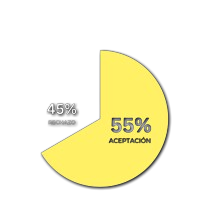Ansiedad ante los exámenes en estudiantes de enfermería de la ciudad de Guayaquil.
DOI:
https://doi.org/10.59282/reincisol.V3(5)727-744Palabras clave:
Ansiedad ante los Exámenes; Estudiantes de Enfermería; Educación en Enfermería.Resumen
Objetivo: Determinar el nivel de ansiedad ante el examen, que poseen los estudiantes de enfermería.
Método: Investigación de tipo cuantitativa, descriptiva, realizada en 76 estudiantes de enfermería de una universidad de la ciudad de Guayaquil, a los que se les aplicó la Escala de Ansiedad ante el examen “Cognitive Test Anxiety Scale – 2nd Edition”, en el mes de abril del 2024. Los datos fueron analizados mediante estadística descriptiva.
Resultados: Entre las causas de la ansiedad percibida, resaltan las responsabilidades académicas con un 56,57%, luego le siguen los problemas personales con el 22,36%, ente los síntomas que aparecían en los periodos de ansiedad, destacaron la cefalea, temblor de parpado y sensación de palpitaciones, así como epigastralgia. El 47,36% de los estudiantes posee ansiedad moderada ante los exámenes destacando enunciados como: “Cuando termino un examen difícil, tengo miedo de ver la calificación” “Durante los exámenes, suelo pensar en las consecuencias que tendré si repruebo” y “A menudo me doy cuenta de los errores que cometí justo después de entregar un examen” que fueron las aseveraciones con mayor porcentaje de selección.
Conclusión: La ansiedad ante los exámenes es un problema importante que afecta a los estudiantes de enfermería en todos los niveles. Se recomienda detección temprana de este problema en los estudiantes que comienzan la carrera de enfermería para poder generar estrategias de afrontamiento para la ansiedad.
Descargas
Métricas
Citas
Ainsworth, H., Torgerson, D., Torgerson, C., Bene, J., Grant, C., Ford, S., & Watt, I. (2010). The effect of hypnotherapy on exam anxiety and exam performance: A pilot randomised controlled trial. Effective Education, 2(2). https://durham-repository.worktribe.com/output/1477379
Alizadeh, M., Karimi, F., Valizadeh, S., Jafarabadi, M. A., Cheraghi, P., & Tanomand, A. (2014). Investigation on Relationship between Test Anxiety and Academic Performance of Nursing and Midwifery Students in Tabriz and Maragheh—Iran. Health, 6(21), Article 21. https://doi.org/10.4236/health.2014.621345
Asghari, A., Kadir, R. A., Elias, H., & Baba, M. (2012). Test anxiety and its related concepts: A brief review. Education Sciences and Psychology, (3), 3-8.
Augner, C. (2015). Depressive symptoms and perceived chronic stress predict test anxiety in nursing students. Central European Journal of Nursing and Midwifery, 6(3), 291-297. https://doi.org/10.15452/CEJNM.2015.06.0018
Beggs, C., Shields, D., & Janiszewski Goodin, H. (2011). Using guided reflection to reduce test anxiety in nursing students. Journal of Holistic Nursing: Official Journal of the American Holistic Nurses’ Association, 29(2), 140-147. https://doi.org/10.1177/0898010110393352
Choueiry, N., Salamoun, T., Jabbour, H., Osta, N. E., Hajj, A., & Khabbaz, L. R. (2016). Insomnia and Relationship with Anxiety in University Students: A Cross-Sectional Designed Study. PLOS ONE, 11(2), e0149643. https://doi.org/10.1371/journal.pone.0149643
Driscoll, R., Evans, G., Ramsey, G., & Wheeler, S. (2009, septiembre 22). High Test Anxiety among Nursing Students. Online Submission.
Fraser, J. (2013). Worry, anxiety and the OSCE. The Clinical Teacher, 10(4), 272-272. https://doi.org/10.1111/tct.12097
Galal, S., Vyas, D., Hackett, R. K., Rogan, E., & Nguyen, C. (2021). Effectiveness of Music Interventions to Reduce Test Anxiety in Pharmacy Students. Pharmacy: Journal of Pharmacy Education and Practice, 9(1), 10. https://doi.org/10.3390/pharmacy9010010
Karpicke, J. D., & Blunt, J. R. (2011). Retrieval Practice Produces More Learning than Elaborative Studying with Concept Mapping. Science, 331(6018), 772-775. https://doi.org/10.1126/science.1199327
Kavurmacı, M., Küçükoğlu, S., & Tan, M. (2015). Effectiveness of aromatherapy in reducing test anxiety among nursing students. INDIAN JOURNAL OF TRADITIONAL KNOWLEDGE, 14(1). https://avesis.atauni.edu.tr/yayin/5246dbf4-180a-4813-b418-2c478c0b6411/effectiveness-of-aromatherapy-in-reducing-test-anxiety-among-nursing-students
Moore. (2013). Test Anxiety and Nursing Student s. Licenciatura Honors Tesis. https://dc.etsu.edu/honors/169
Shapiro, A. L. (2014). Test anxiety among nursing students: A systematic review. Teaching and Learning in Nursing, 9(4), 193-202. https://doi.org/10.1016/j.teln.2014.06.001
Stenlund, T., Eklöf, H., & Lyrén, P.-E. (2017). Group differences in test-taking behaviour: An example from a high-stakes testing program. Assessment in Education: Principles, Policy & Practice, 24(1), 4-20. https://doi.org/10.1080/0969594X.2016.1142935
Thomas, C. L., Cassady, J. C., & Finch, W. H. (2016). Identifying severity standards on the cognitive test anxiety scale: Cutscore determination using latent class and cluster analysis. Manuscript submitted for publication in the Journal of Psychoeducational Assessment.
Timmins, F., Corroon, A. M., Byrne, G., & Mooney, B. (2011). The challenge of contemporary nurse education programmes. Perceived stressors of nursing students: Mental health and related lifestyle issues. Journal of Psychiatric and Mental Health Nursing, 18(9), 758-766. https://doi.org/10.1111/j.1365-2850.2011.01780.x
Walker, D.-M. (2012). Classroom Assessment Techniques: An Assessment and Student Evaluation Method. Creative Education, 03(06), 903-907. https://doi.org/10.4236/ce.2012.326136
Wood, S. G., Hart, S. A., Little, C. W., & Phillips, B. M. (2016). Test anxiety and a high-stakes standardized reading comprehension test: A behavioral genetics perspective. Merrill-Palmer quarterly (Wayne State University. Press), 62(3), 233-251. https://doi.org/10.13110/merrpalmquar1982.62.3.0233
Zeidner, M. (1998). Test anxiety: The state of the art (pp. xxi, 440). Plenum Press.
Publicado
Cómo citar
Número
Sección
Licencia
Derechos de autor 2024 Luis Alberto Salazar Guashpa, Ana Alexandra Llamuca Pacurucu, Oscar Omar Chávez Molina, Joicy Anabel Franco Coffré

Esta obra está bajo una licencia internacional Creative Commons Atribución-NoComercial-CompartirIgual 4.0.

























